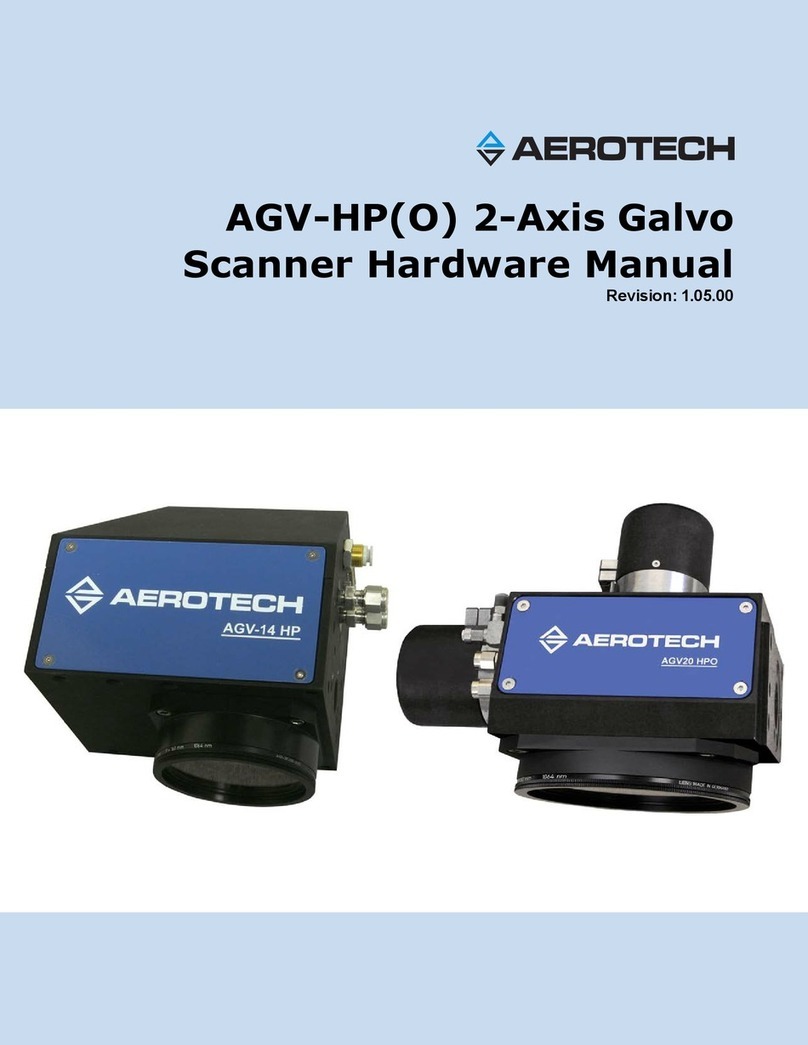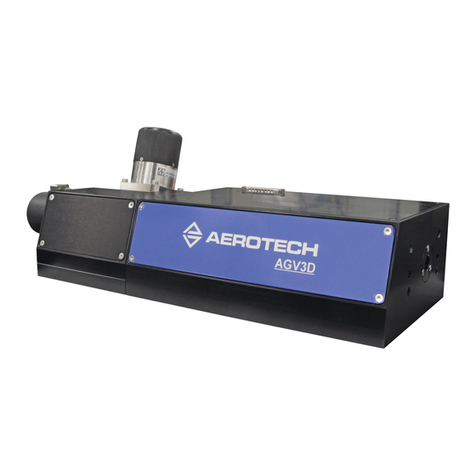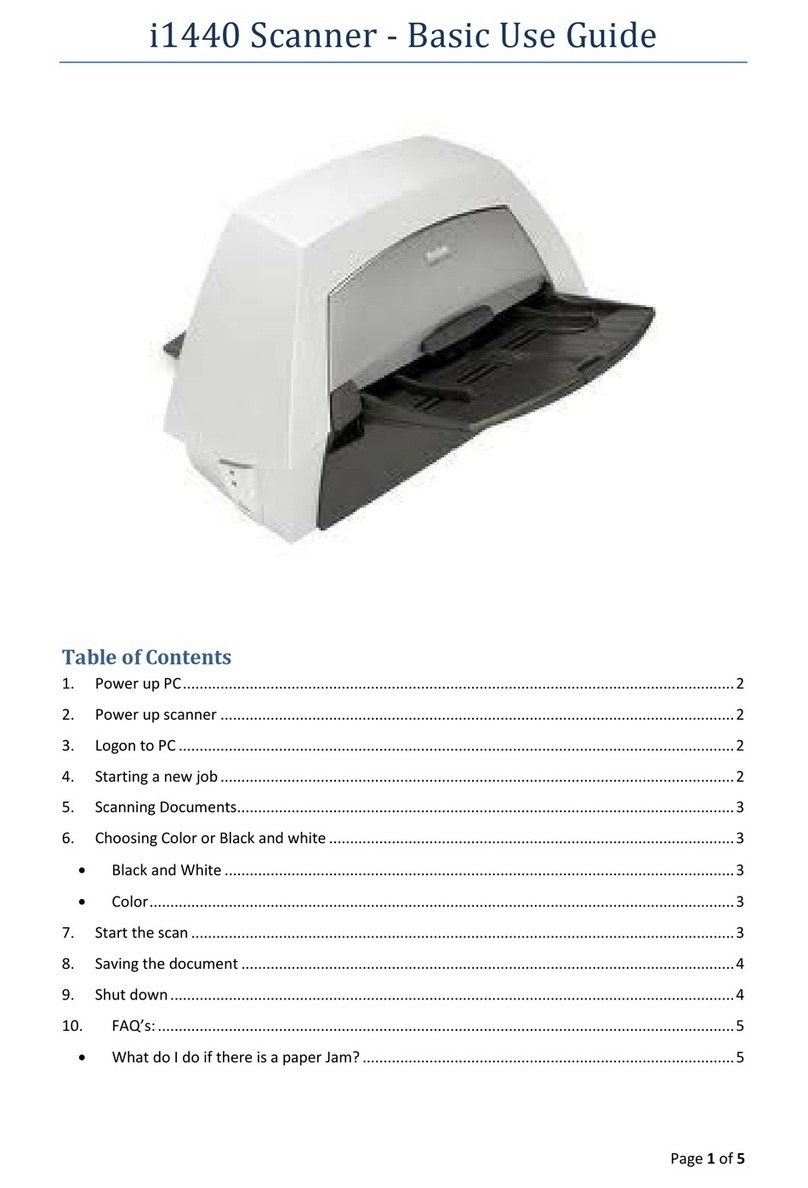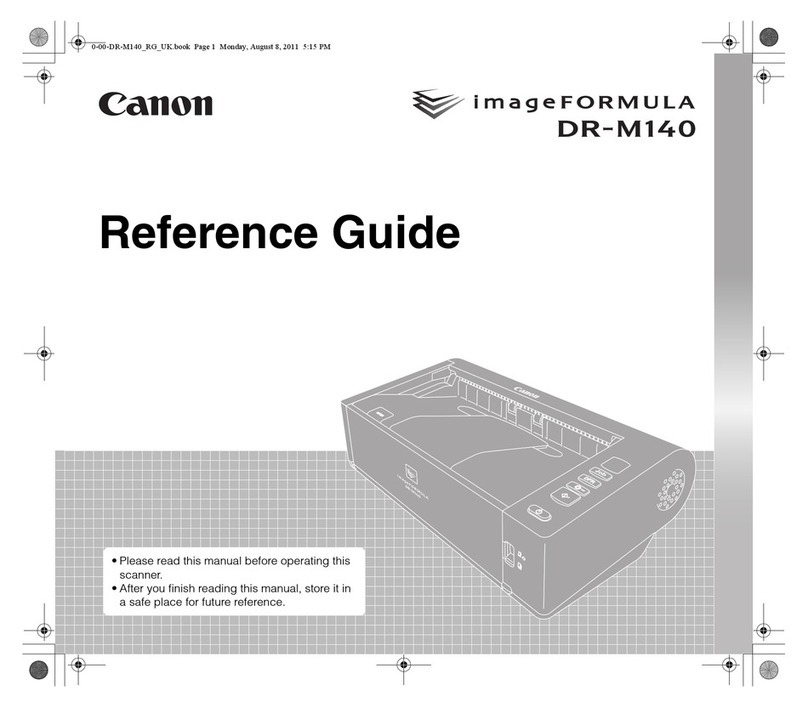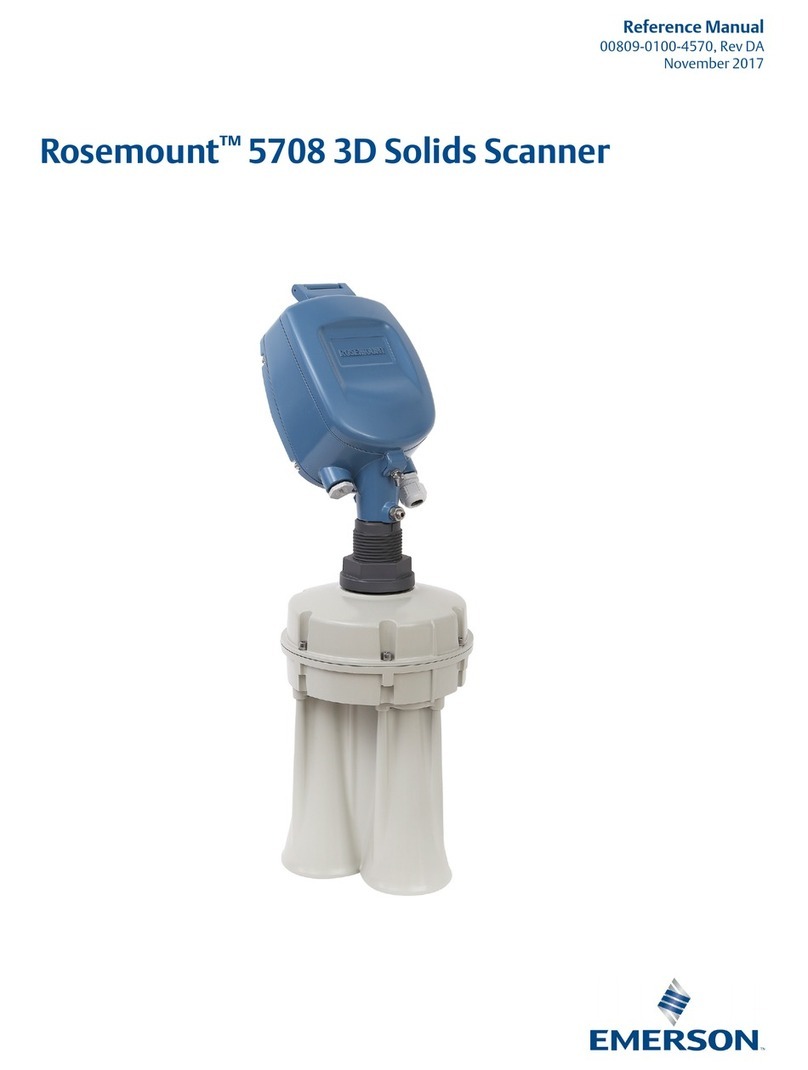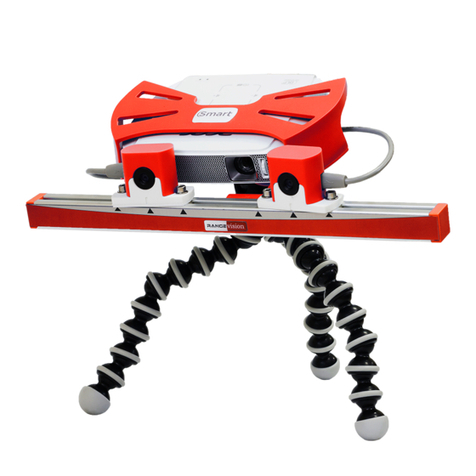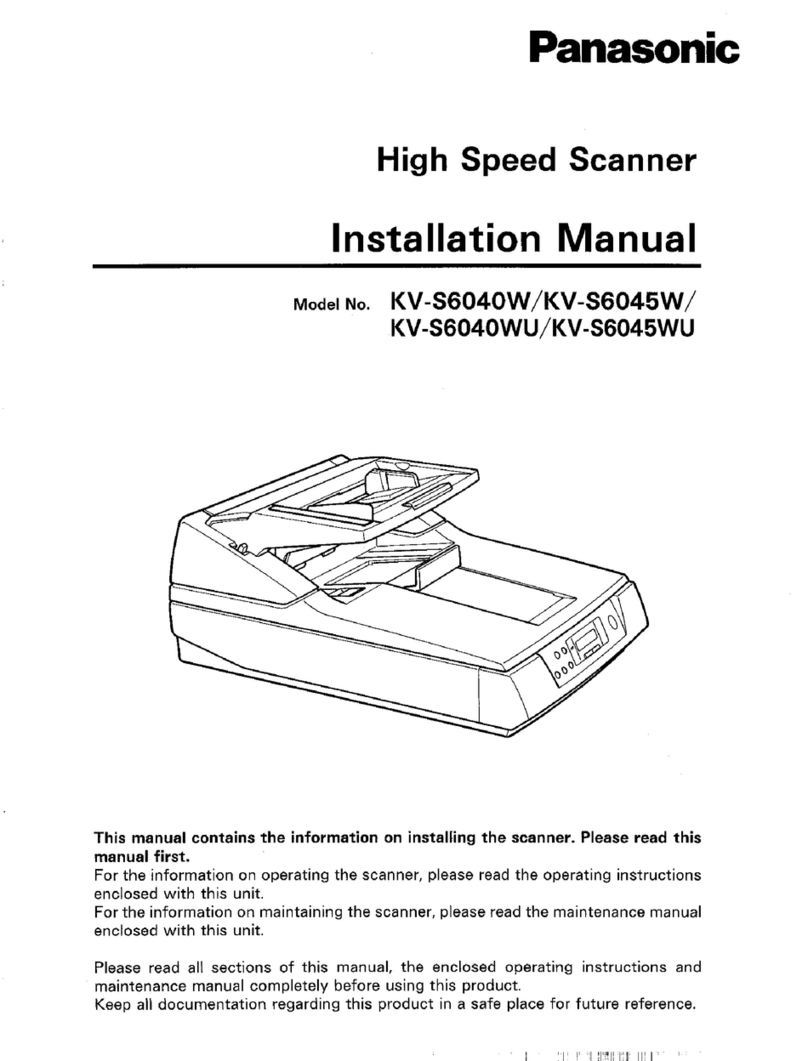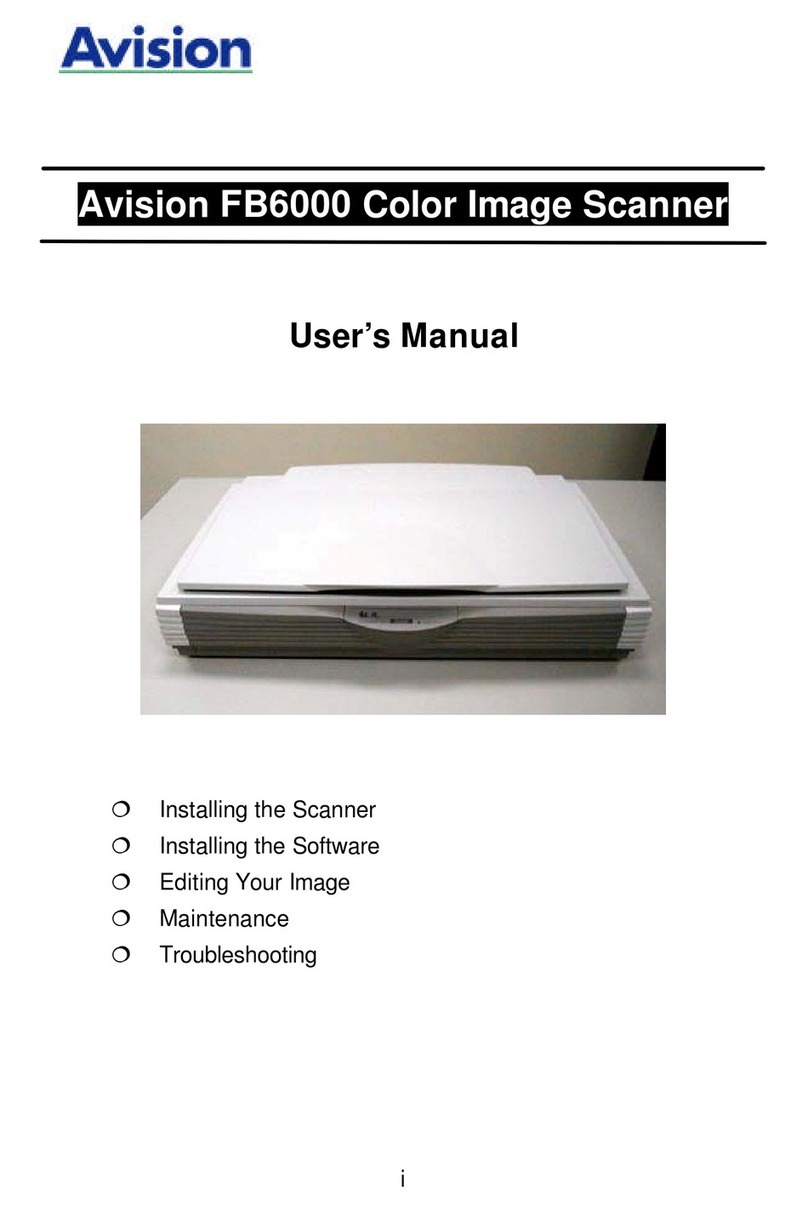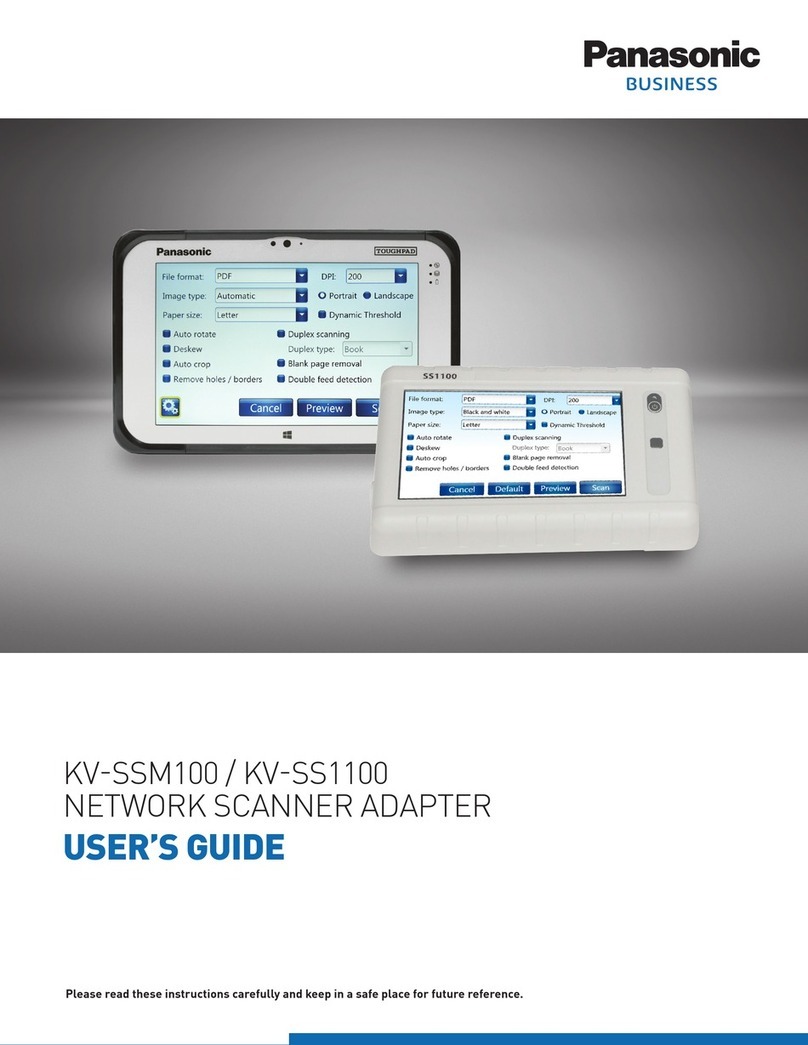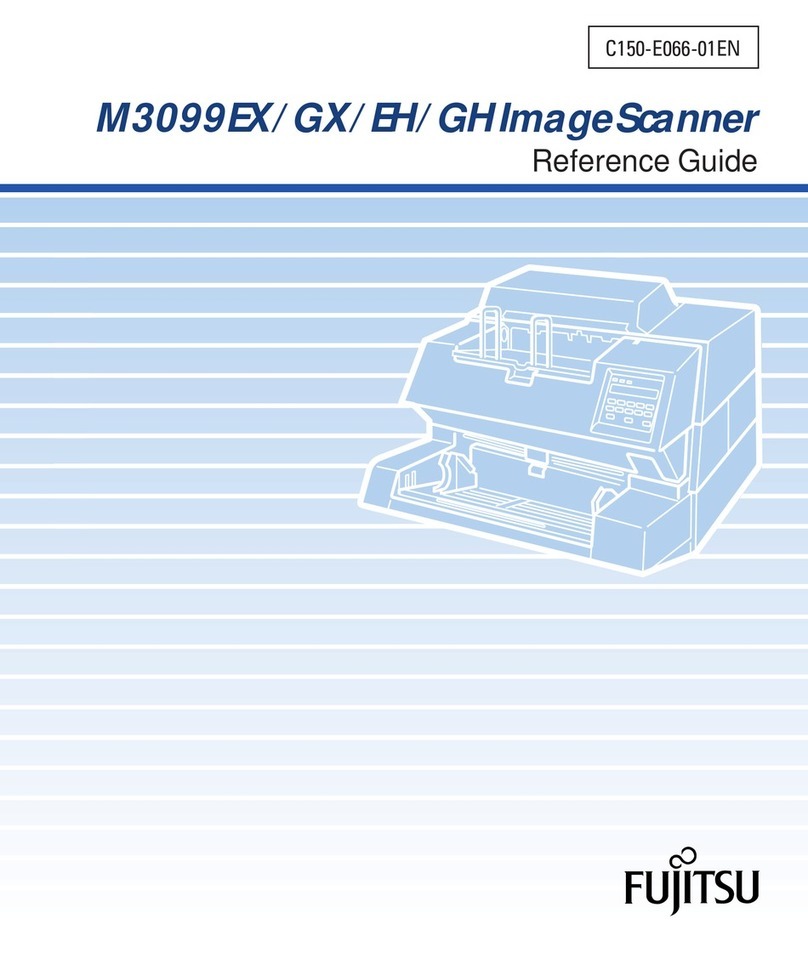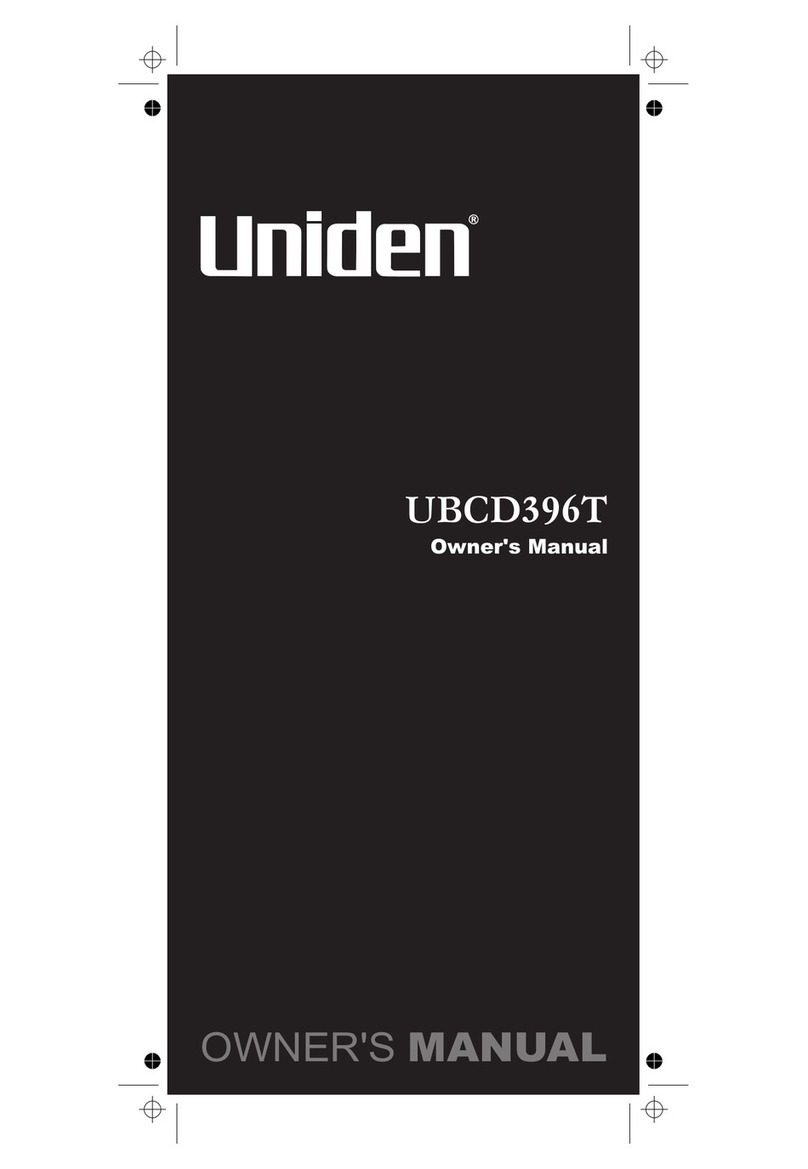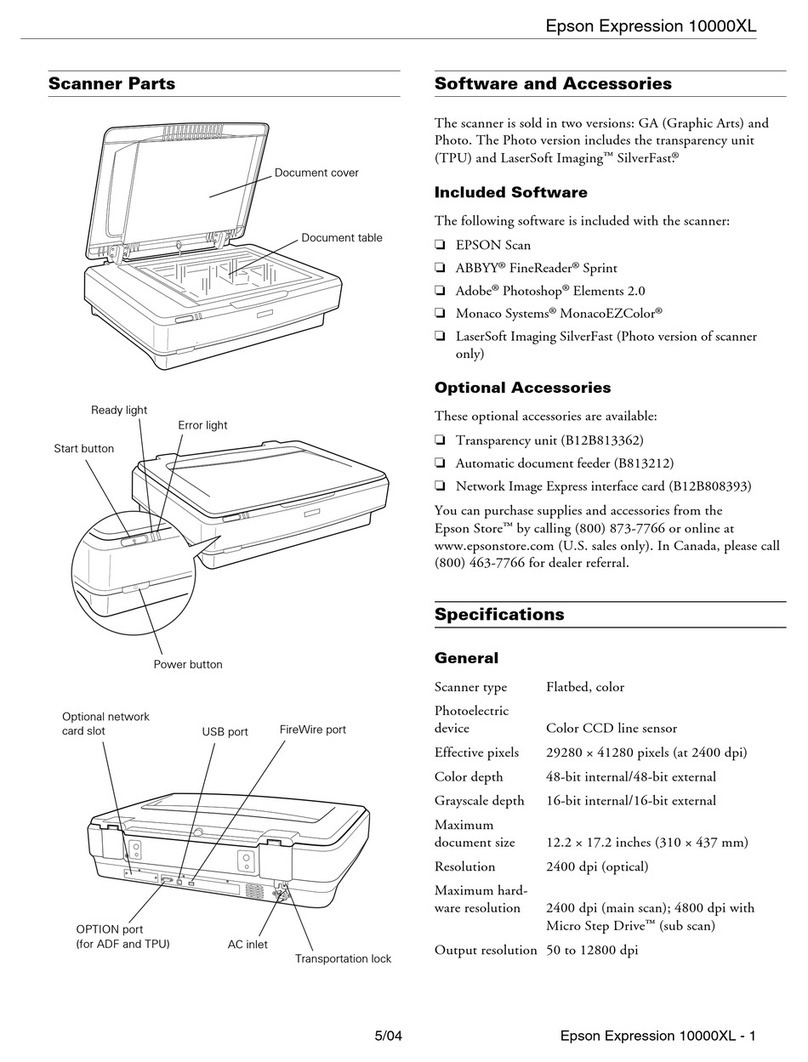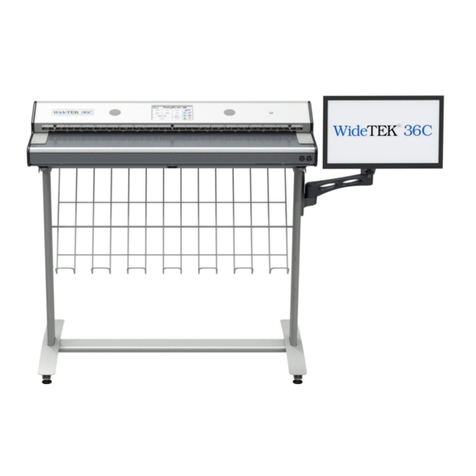Aerotech AGV3D Series User manual

Revision: 1.00.00
AGV3D Three-Axis Laser Scan
Head Hardware Manual

Global Technical Support
Go to www.aerotech.com/global-technical-support for information and support about your Aerotech products. The website
supplies software, product manuals, Help files, training schedules, and PC-to-PC remote technical support. If necessary,
you can complete Product Return (RMA) forms and get information about repairs and spare or replacement parts. To get help
immediately, contact a service office or your sales representative. Include your customer order number in your email or have
it available before you call.
United States (World Headquarters)
Email: Support@aerotech.com
Phone: +1-412-967-6440
Fax: +1-412-967-6870
101 Zeta Drive
Pittsburgh, PA 15238-2811
www.aerotech.com
United Kingdom China
Email: Support@aerotech.com
Phone: +44 (0)1256 855055
Fax: +44 (0)1256 855649
Email: Support@aerotech.com
Phone: +86 (21) 5508 6731
Germany Taiwan
Email: Support@aerotech.com
Phone: +49 (0)911 967 9370
Fax: +49 (0)911 967 93720
Email: Support@aerotech.com
Phone: +886 (0)2 8751 6690
France
Email: Support@aerotech.com
Phone: +33 2 37 21 87 65
This manual contains proprietary information and may not be reproduced, disclosed, or used in whole or in part without the
express written permission of Aerotech, Inc. Product names mentioned herein are used for identification purposes only and
may be trademarks of their respective companies.
Copyright © 2020, Aerotech, Inc., All rights reserved.

Table of Contents
AGV3D Three-Axis Laser Scan Head Hardware Manual 1
Table of Contents 3
List of Figures 4
List of Tables 5
Safety Procedures and Warnings 6
Laser Safety 7
Classes of Lasers 7
Laser Area 8
Laser Shutter 8
EU Declaration of Incorporation 10
Chapter 1: Overview 11
1.1. Environmental Specifications 14
1.2. Accuracy and Temperature Effects 15
1.2.1. Power-On Thermal Drift 15
1.3. Basic Specifications 16
1.4. Software Configuration 21
Chapter 2: Mechanical Specifications and Installation 23
2.1. Unpacking and Handling the ScanHead 24
2.2. Dimensions 25
2.3. Remove the Shipping Clamp 27
2.4. Securing the Scan Head to the Mounting Surface 29
2.5. Laser Beam Alignment 31
2.6. Air Requirements 34
2.7. Water Requirements 35
2.8. Changing the Dynamic Focusing Field-of-View Setting 36
2.9. Using an F-Theta Lens 38
Chapter 3: Electrical Specifications and Installation 39
3.1. Motor and Feedback Connectors 40
3.2. Motor and Feedback Wiring 43
3.3. Motor and Feedback Specifications 46
Chapter 4: Maintenance 47
4.1. Service and Inspection Schedule 47
4.2. Cleaning and Inspection 48
4.2.1. Protective Windows 48
4.2.2. Turning Mirrors 50
4.3. Troubleshooting 51
Appendix A: Warranty and Field Service 53
Appendix B: Revision History 55
Index 57
www.aerotech.com 3
AGV3D Hardware Manual Table of Contents

List of Figures
Figure 1-1: Functional Principle of a 3-Axis Galvanometer Scanner 11
Figure 1-2: Standard AGV3D 12
Figure 1-3: Working Distance Detail 20
Figure 2-1: AGV3D-20 Scan Head Dimensions 25
Figure 2-2: AGV3D-30 Scan Head Dimensions 26
Figure 2-3: Top Cover Removal 27
Figure 2-4: Shipping Clamp Detail 28
Figure 2-5: Mounting Point Locations 30
Figure 2-6: Alignment Fixture 31
Figure 2-7: Air-Cooling Locations 34
Figure 2-8: Water Cooling Locations 35
Figure 2-9: Dynamic Focusing Module Mounting Screws 36
Figure 2-10: Dynamic Focusing Module Reference 37
Figure 3-1: Connectors 40
Figure 3-2: X- and Y-Axis Motor and Feedback Wiring 44
Figure 3-3: Z-Axis Motor and Feedback Wiring 45
Figure 4-1: Exit Aperture Protective Window Mounting Bracket 50
List of Figures AGV3D Hardware Manual
4 www.aerotech.com

List of Tables
Table 1-1: Ordering Options 13
Table 1-2: Environmental Specifications 14
Table 1-3: AGV3D Series Specifications 16
Table 1-4: AGV3D Series Specifications (continued) 17
Table 1-5: AGV3D-20 Spot Diameter Range (µm) within Field of View per Wavelength 18
Table 1-6: AGV3D-30 Spot Diameter Range (µm) within Field of View per Wavelength 19
Table 1-7: FOV Extents by Field Configuration Option and Wavelength 20
Table 2-1: Mounting Hardware Specifications 30
Table 2-2: Mounting Specifications 30
Table 2-3: Recommended Beam Power Settings 32
Table 3-1: Motor and Feedback Connecter Pinouts (X and Y Axis) 41
Table 3-2: Mating Connector Part Numbers for the Motor and Feedback Connectors (X and Y Axis) 41
Table 3-3: Motor and Feedback Connecter Pinout (Z Axis) 42
Table 3-4: Mating Connector Part Numbers for the Motor and Feedback Connector (Z Axis) 42
Table 3-5: Aerotech Motor and Feedback Cable Part Numbers 43
Table 3-6: AGV3D-20 Motor and Feedback Specifications 46
Table 3-7: AGV3D-30 Motor and Feedback Specifications 46
Table 4-1: Troubleshooting 51
www.aerotech.com 5
AGV3D Hardware Manual List of Tables

Safety Procedures and Warnings
This manual tells you how to carefully and correctly use and operate the AGV3D.
lRead all parts of this manual before you install or operate the AGV3D or before you do
maintenance to your system.
lTo prevent injury to you and damage to the equipment, obey the precautions in this
manual.
If you do not understand the information in this manual, contact Aerotech Global Technical
Support.
N O T E : Aerotech continually improves its product offerings; listed options may be superseded at any
time. All drawings and illustrations are for reference only and were complete and accurate as of this
manual’s release. Refer to www.aerotech.com for the most up-to-date information.
D A N G E R : Reduce the possibility of electrical shock, bodily injury, or death. This product
contains potentially lethal voltages.
lOperators must be trained before operating this equipment.
lAll service and maintenance must be performed by qualified personnel.
lDisconnect electrical power before servicing equipment.
lDo not connect or disconnect any electrical components or connecting cables while
connected to a power source.
lRestrict access to the AGV3D and component parts while the AGV3D is connected to a
power source.
lAll components must be properly grounded in accordance with local electrical safety
requirements.
lOperator safeguarding requirements must be addressed during final integration of the
product.
D A N G E R : Lasers.
lWear eye protection.
lBe aware of the possibility of visible and/or invisible laser radiation. Avoid eye or skin
exposure to direct or scattered radiation.
D A N G E R : Compressed Air.
lWear eye protection when in the proximity of compressed air components.
lThe noise from some compressed air components could be loud enough to require ear
protection.
W A R N I N G : To prevent damage to the equipment:
lOperators must be trained before operating this equipment.
lAll service and maintenance must be performed by qualified personnel.
lDo not expose this product to environments or conditions outside of the listed
specifications. Exceeding environmental or operating specifications can cause damage to
the equipment.
Safety Procedures and Warnings AGV3D Hardware Manual
6 www.aerotech.com

lUse care when moving the AGV3D. Lifting or transporting the AGV3D improperly can
result in injury or damage to the AGV3D.
lThe AGV3D must be mounted securely. Improper mounting can result in injury and
damage to the equipment.
W A R N I N G : Cables can pose a tripping hazard. Securely mount and position all system
cables to avoid potential hazards.
W A R N I N G : Wear clean, powder-free gloves when you handle optical components.
Laser Safety
It is the responsibility of the user to provide the necessary conditions for safe operation of a laser system and
to safeguard the surrounding area against the hazards that can be caused by laser radiation. The user must
ensure compliance with all local and national regulations.
Although the scan head by itself does not emit laser radiation, the user must undertake a thorough analysis
of system safety before operating the AGV3D in conjunction with a laser source. Important information for
performing this analysis is presented in this manual. Additional information may be found in the
corresponding documentation supplied by the manufacturer of the laser source.
Classes of Lasers
The AGV3D series scan head can be used with a variety of lasers. Each laser is assigned a particular
hazard level, which is indicated by the Laser Class label that is affixed to the device near the location where
laser radiation is emitted. Brief descriptions of each of the various radiation classes are presented in the
table below.
Note that in addition to the dangers of radiation, lasers may pose further dangers, such as the risk of
electrical shock or the generation of poisonous fumes.
Classifications of Laser Devices
Class Danger
Class I Inherently safe; no possibility of eye damage during normal operation.
Class IIa Requires in excess of 1000 seconds of continuous viewing to cause eye dam-
age.
Class II The blink reflex will prevent eye damage, unless the person deliberately stares
into the beam for an extended period of time.
Class IIIa
Mostly dangerous in combination with optical instruments which change the
beam diameter or power density. However, even without optical enhancement,
direct contact for over two minutes may cause eye damage.
Class IIIb Direct exposures of 0.01 second or less may cause eye and skin damage.
Class IV Direct or scattered radiation without optical enhancement may cause eye and
skin damage.
www.aerotech.com 7
AGV3D Hardware Manual Laser Safety

Laser Area
The area in which the maximum permitted radiation value can be exceeded is defined as the laser area. In
general, a laser area is applicable to Class IIIa, IIIb and IV laser systems. A laser area may also be produced
by focusing the beam of a Class I, IIa, or II laser device.
The AGV3D has the capability of aiming the laser beam over an approximately pyramidal volume. When the
scan head is used in conjunction with a laser device capable of generating a sufficiently intense beam, a
laser area will be produced that includes the aiming volume as well as the reflections from all objects that
can be exposed to the radiation. It is important to note that even apparently diffuse surfaces can reflect laser
radiation and a laser beam that has been reflected several times can still be dangerous.
The laser area must be designated by suitable warning signs or lamps and protected by appropriate shading
and interlock switches.
Figure 1: Laser Area of an AGV3D Scan Head
Laser Shutter
A laser attenuator (beam shutter) is a mechanical or electrical device that blocks the emission of laser
radiation. It is a requirement for most classes of laser systems. The attenuator must be available for use at
all times during operation of the laser system. Power switches and key controls do not satisfy the attenuator
requirement.
The AGV3D scan head does not include a laser attenuator, and therefore it cannot block or weaken the laser
beam. Due to the unique properties of each laser, it is the user’s responsibility to incorporate an appropriate
shutter as per any and all applicable regulations in order to prevent unwanted emission of the laser beam.
The beam shutter should be fitted between the laser source and the scan head (refer to Figure 1).
Laser Area AGV3D Hardware Manual
8 www.aerotech.com

W A R N I N G : Do no stare into the laser beam, place your body parts in the beam path, or
expose yourself to reflections from powerful beams.
W A R N I N G : Only a Class 1 HeNe laser is recommended for performing alignments. If this is
not possible, use the lowest power setting on the available laser and employ remote beam
sensing techniques.
W A R N I N G : Wear eye protection. The danger to your eyes increases when optical
instruments are used in conjunction with the scan head.
www.aerotech.com 9
AGV3D Hardware Manual Laser Shutter

EU Declaration of Incorporation
Manufacturer:
Aerotech, Inc.
101 Zeta Drive
Pittsburgh, PA 15238-2811
USA
herewith declares that the product:
AGV3D Scan Head
is intended to be incorporated into machinery to constitute machinery covered by the Directive 2006/42/EC
as amended;
and that the following harmonized European standards have been applied:
EN ISO 12100:2010
Safety of machinery - Basic concepts, general principles for design
EN 60204-1:2010
Safety of machinery - Electrical equipment of machines - Part 1:General requirements
and further more declares that
it is not allowed to put the equipment into service until the machinery into which it is to be
incorporated or of which it is to be a component has been found and declared to be in
conformity with the provisions of the Directive 2006/42/EC and with national
implementing legislation, for example, as a whole, including the equipment referred to in
this Declaration.
This is to certify that the aforementioned product is in accordance with the applicable requirements of the
following Directive(s):
EU 2015/863 Directive, Restricted Substances
Authorized Representative:
Simon Smith, European Director
Address:
Aerotech Ltd
The Old Brick Kiln, Ramsdell, Tadley
Hampshire RG26 5PR
UK
Name
/ Alex Weibel
Position
Engineer Verifying Compliance
Location
Pittsburgh, PA
Date
7/20/2020
EU Declaration of Incorporation AGV3D Hardware Manual
10 www.aerotech.com

Chapter 1: Overview
Aerotech’s AGV3D three-axis laser scan head manipulates a laser beam in three degrees of freedom: X, Y,
and Z. The AGV3D uses two mirrors, each of which is actuated by a galvano motor, to deflect the beam in
the X and Y directions. Before the X and Y deflections, the laser beam travels through the Dynamic Focusing
Module (DFM). The DFM uses an expander lens that is mounted on a high-dynamic linear stage and
stationary optics to adjust the focus the laser beam. Change the distance between the expander lens and the
optics to adjust the focal height (Z-height of the focused spot). Use this in field-flattening applications to
eliminate the need for expensive focusing optics such as an F-theta lens, or in applications that require
different working heights in different stages of the process. The DFM in the AGV3D can also be used to
collimate the incoming laser beam to function as a beam expander to increase the incoming beam diameter
to 2.5X the original size.
The scan head enclosure is fully sealed, featuring cover glass and gaskets over both the input and exit
apertures, to make sure that no dust or particles can infiltrate the enclosure and cause damage to the internal
optical components. Only use a laser that meets the laser specifications that are listed in Section 1.3. Basic
Specifications for details.
Figure 1-1: Functional Principle of a 3-Axis Galvanometer Scanner
Integration Flexibility
The AGV3D offers mounting flexibility, with mounting hole patterns on the side, rear, and bottom faces. The
control connections consist of two 300 mm cables terminated in 25-pin D-style connectors for the X and Y
axes, and an additional 25-pin D-style connector located on the top face of the enclosure for the Z axis. The
cables can be oriented in any direction and terminated on the machine to make sure that there is no
interference with beam delivery from the control cables.
www.aerotech.com 11
AGV3D Hardware Manual Chapter 1: Overview

Table 1-1: Ordering Options
AGV3DSeries High Performance Galvanometer Scanner
Wavelength (Required)
-W001 10.6 µm
-W003 1552 nm
-W004 1064 nm
-W005 1030 nm
-W006 532 nm
-W007 515 nm
-W008 355 nm
-W009 343 nm
-W012 9.3 µm
NOTE: Custom wavelengths are available. Contact the factory for details.
Scanner Aperture (Required)
-20 20 mm Scanner Aperture
-30 30 mm Scanner Aperture
Field Configuration (Required)
-F1 Near Field of View
-F2 Far Field of View
Air Cooling (Optional, refer to Section 2.6.)
-AC Air cooling
Water Cooling (Optional, refer to Section 2.7.)
-WC Water cooling
Plate (Optional)
-MP1 Rear Mounting Plate
-MP2 Bottom Mounting Plate
Integration (Required)
-TAS
Integration - Test as system
Testing, integration, and documentation of a group of components as a complete
system that will be used together (ex: drive, controller, and stage). This includes
parameter file generation, system tuning, and documentation of the system
configuration.
-TAC
Integration - Test as components
Testing and integration of individual items as discrete components that ship together.
This is typically used for spare parts, replacement parts, or items that will not be used
together. These components may or may not be part of a larger system.
www.aerotech.com 13
AGV3D Hardware Manual Chapter 1: Overview

1.1. Environmental Specifications
W A R N I N G : Do not expose this product to environments or conditions outside of the listed
specifications. Exceeding environmental or operating specifications can cause damage to the
equipment.
Table 1-2: Environmental Specifications
Ambient
Temperature
The optimal operating temperature is 20° C ±2° C (68° F ±4° F). If at any time the
operating temperature deviates from 20° C degradation in performance could occur.
Storage: 0° to 40° C (32° to 104° F) in original shipping packaging
Humidity
Operating: 20% to 60% RH
Storage: 10% to 70% RH, non-condensing in original packaging. The stage should be
packaged with desiccant if it is to be stored for an extended time.
Altitude
Operating: 0 m to 2,000 m (0 ft to 6,562 ft) above sea level
Contact Aerotech if your specific application involves use above 2,000 m or below sea
level.
Vibration
Use the system in a low vibration environment. Excessive floor or acoustical vibration
can affect system performance. Contact Aerotech for information regarding your
specific application.
Protection
Rating
The AGV3D is gasketed at critical interfaces to provide some protection from
contamination due to laser marking and cutting. Dust and fumes generated by the laser
machining process should be removed through exhaust or vacuum systems. Failure to
control this debris could result in rapid contamination of the cover glass and damage to
beam delivery optical components.
Use Indoor use only
1.1. Environmental Specifications AGV3D Hardware Manual
14 www.aerotech.com

1.2. Accuracy and Temperature Effects
Aerotech products are designed for and built in a 20°C (68°F) environment. Extreme temperature changes
could cause a decrease in performance or permanent damage to the AGV3D. At a minimum, the
environmental temperature must be controlled to within 0.25ºC per 24 hours to ensure the AGV3D
specifications are repeatable over an extended period of time. The severity of temperature effects on all
specifications depends on many different environmental conditions, including how the AGV3D is mounted.
Contact the factory for more details.
1.2.1. Power-On Thermal Drift
For the best possible accuracy and repeatability, it is recommended that the +5 V feedback power supply be
connected to the galvano motors for a minimum of four hours prior to performing any critical operations with
the AGV3D. Application of the feedback power supply can raise the temperature of the galvano motors,
resulting in a transient period of "power-on" thermal drift. Allowance for this warm-up period provides the
galvano motors sufficient time to achieve thermal equilibrium.
In applications where a mark-and-measure calibration is performed to improve accuracy, it is essential that
the calibration procedure not be conducted prior to completion of the warm-up period. Otherwise, the
calibration may not be effective due to the change in zero offset that can result from the "power-on" thermal
drift.
To minimize delays in operating the AGV3D, it is recommended that the +5 V feedback power supply is
continuously maintained to the galvano motors, even when they are not under servo control.
www.aerotech.com 15
AGV3D Hardware Manual 1.2. Accuracy and Temperature Effects

1.3. Basic Specifications
Table 1-3: AGV3D Series Specifications
AGV3D-20 AGV3D-30
Optical Specifications
Compatible Wavelength (1) 343 nm, 355 nm, 515 nm, 532 nm, 1030 nm, 1064 nm, 1550
nm, 9.3 µm, 10.6 µm
Aperture 20 mm 30 mm
Input Beam Diameter (1/e2) 8 mm 12 mm
Beam Displacement 23.2 mm 35.7 mm
Dynamic Performance
Tracking Error 0 µsec
Peak Acceleration Galvo Scanners 500,000 rad/s2350,000 rad/s2
Z-Focus (2) 150 m/s2
Continuous Acceleration Galvo Scanners 130,000 rad/s2120,000 rad/s2
Z-Focus (2) 50 m/s2
Maximum Positioning
Speed
Galvo Scanners
300 rad/s
40 m/s at 100x100 mm FOV
400 m/s 1000x1000 mm
FOV
125 rad/s
17 m/s at 100x100 mm FOV
170 m/s at 1000x1000 mm
FOV
Z-Focus
1000 mm/s (2)
3.8 m/s at 160 mm working distance
30 m/s at 500 mm working distance
100 m/s at 1000 mm working distance
Processing Speed (3)
Galvo Scanners
50 rad/s
at 100x100 mm FOV: 6.5 m/s
at 1000x1000 mm FOV: 65 m/s
Z-Focus
500 mm/s (2)
1.9 m/s at 160 mm working distance
15 m/s at 500 mm working distance
50 m/s at 1000 mm working distance
Stability
Long-Term Drift (4) Galvo Scanners 10 µrad / 12 h
Z-Focus 0.5 μm / 12 h
Thermal Drift Galvo Scanners 10 µrad / °C
Z-Focus 2.5 μm / °C
All angles are optical unless otherwise specified. All specifications are per axis unless otherwise specified.
(1) Contact Aerotech to inquire about additional wavelengths.
(2) As measured at the focusing apparatus.
(3) Processing speed is dependent on allowable tracking error. Achievable with < 2% velocity error over continous velocity portion of
the move.
(4) After initial 3-hour warm-up with ambient temperature variation < ±0.5°C.
(5) Without -AC option
(6) For -AC option, if nitrogen is used, it must be 99.99% pure and filtered to 0.25 μm. If compressed air is used, it must be filtered to
0.25 μm, dry to 0º F dew point and oil free.
(7) Working distance is measured from the bottom surface of the scan head.
1.3. Basic Specifications AGV3D Hardware Manual
16 www.aerotech.com

Table 1-4: AGV3D Series Specifications (continued)
AGV3D-20 AGV3D-30
Mechanical Specifications
Axes 3 total: Spot positioning (X,Y); Focusing (Z)
Accuracy Galvo Scanners 50 µrad pk-pk
Z-Focus 0.5 µm
Repeatability Galvo Scanners 0.4 µrad rms
Z-Focus 0.15 µm
Dither (Minimum Incre-
mental Motion) (5)
Galvo Scanners < 0.4 µrad rms
Z-Focus
0.003 μm (2)
0.05 μm at 160 mm working distance
0.25 μm at 500 mm working distance
0.8 μm at 1000 mm working distance
Cooling (6) Air cooling (-ACoption);
Water cooling (-WC option)
Weight 10.5 kg 11.2 kg
Material Anodized aluminum
Mean Time Before Failure (MTBF) 20,000 hours
All angles are optical unless otherwise specified. All specifications are per axis unless otherwise specified.
(1) Contact Aerotech to inquire about additional wavelengths.
(2) As measured at the focusing apparatus.
(3) Processing speed is dependent on allowable tracking error. Achievable with < 2% velocity error over continous velocity portion of
the move.
(4) After initial 3-hour warm-up with ambient temperature variation < ±0.5°C.
(5) Without -AC option
(6) For -AC option, if nitrogen is used, it must be 99.99% pure and filtered to 0.25 μm. If compressed air is used, it must be filtered to
0.25 μm, dry to 0º F dew point and oil free.
(7) Working distance is measured from the bottom surface of the scan head.
www.aerotech.com 17
AGV3D Hardware Manual 1.3. Basic Specifications

Table 1-5: AGV3D-20 Spot Diameter Range (µm) within Field of View per Wavelength
Nominal Field of View
Nominal Working
Distance 343 nm 355 nm 515 nm
100 mm x 100 mm 83 mm 7.0 - 7.5 7.2 - 7.8 10.3 - 11.1
200 mm x 200 mm 221 mm 11.7 - 12.7 12.1 - 13.2 17.3 - 18.9
300 mm x 300 mm 358 mm 16.2 - 17.9 16.8 - 18.5 24.3 - 26.8
400 mm x 400 mm 495 mm 20.8 - 23.0 21.5 - 23.8 31.2 - 34.6
500 mm x 500 mm 632 mm 25.3 - 28.1 26.3 - 29.2 38.1 - 42.4
600 mm x 600 mm 770 mm 29.9 - 33.3 31.0 - 34.5 45.1 - 50.2
700 mm x 700 mm 907 mm 34.5 - 38.4 35.8 - 39.9 52.1 - 58.1
800 mm x 800 mm 1045 mm 39.1 - 43.6 40.5 - 45.2 59.1 - 65.9
1000 mm x 1000 mm 1320 mm 48.2 - 53.9 50.1 - 55.9 73.1 - 81.7
532 nm 1030 nm 1064 nm
100 mm x 100 mm 83 mm 10.6 - 11.4 20.4 - 22.0 21.1 - 22.7
200 mm x 200 mm 221 mm 17.8 - 19.6 34.1 - 37.3 35.2 - 38.5
300 mm x 300 mm 358 mm 25.0 - 27.6 47.8 - 52.7 49.3 - 54.4
400 mm x 400 mm 495 mm 32.2 - 35.7 61.5 - 68.1 63.5 - 70.4
500 mm x 500 mm 632 mm 39.4 - 43.8 75.2 - 83.6 77.6 - 86.3
600 mm x 600 mm 770 mm 46.6 - 51.9 88.9 - 99.0 91.8 - 102.3
700 mm x 700 mm 907 mm 53.8 - 60.0 102.7 - 114.5 106.0 - 118.3
800 mm x 800 mm 1045 mm 61.0 - 68.1 116.5 - 130.1 120.3 - 134.3
1000 mm x 1000 mm 1320 mm 75.4 - 84.4 144.1 - 161.2 148.8 - 166.4
1550 nm 9.3 µm 10.6 µm
100 mm x 100 mm 83 mm 30.7 - 32.9 190.5 - 204.7 216.7 - 232.8
200 mm x 200 mm 221 mm 51.5 - 56.0 316.4 - 346.2 360.2 - 394.1
300 mm x 300 mm 358 mm 71.6 - 79.1 442.6 - 488.1 503.9 - 555.7
400 mm x 400 mm 495 mm 92.2 - 102.2 568.8 - 630.0 647.6 - 717.4
500 mm x 500 mm 632 mm 112.8 - 125.4 695.0 - 771.9 791.3 - 878.9
600 mm x 600 mm 770 mm 133.4 - 148.6 821.1 - 913.7 934.9 - 1040.2
700 mm x 700 mm 907 mm 154.1 - 171.8 947.2 - 1055.4 1078.3 - 1201.2
800 mm x 800 mm 1045 mm 174.7 - 195.1 1073.2 - 1196.9 1221.4 - 1361.9
1000 mm x 1000 m 1320 mm 216.2 - 241.8 1324.6 - 1479.1 1506.8 - 1682.0
NOTES:
Spot diameter is expressed as 1/e2assuming a beam quality of M2= 1.
Nominal working distance is measured from the bottom surface of the scan head.
Refer to Table 1-7 to determine which field configuration option is required to achieve a specific nominal field of view for the desired
wavelength.
Contact Aerotech for additional data.
1.3. Basic Specifications AGV3D Hardware Manual
18 www.aerotech.com

Table 1-6: AGV3D-30 Spot Diameter Range (µm) within Field of View per Wavelength
Nominal Field of View
Nominal Working
Distance 343 nm 355 nm 515 nm
100 mm x 100 mm 83 mm 4.8 - 5.0 5.0 - 5.2 7.4 - 7.7
200 mm x 200 mm 221 mm 7.9 - 8.6 8.2 - 8.9 11.9 - 13.2
300 mm x 300 mm 358 mm 11.0 - 12.2 11.3 - 12.5 17.3 - 19.2
400 mm x 400 mm 495 mm 14.2 - 15.8 14.6 - 16.2 22.7 - 25.3
500 mm x 500 mm 632 mm 17.5 - 19.4 17.8 - 19.8 28.2 - 31.6
600 mm x 600 mm 770 mm 20.7 - 23.0 21 - 23.4 33.8 - 38.1
700 mm x 700 mm 907 mm 23.9 - 26.6 24.3 - 27 39.7 - 44.8
800 mm x 800 mm 1045 mm 27.0 - 30.1 27.5 - 30.6 45.7 - 51.8
1000 mm x 1000 mm 1320 mm 33.3 - 37.1 33.9 - 37.8 58.4 - 66.7
532 nm 1030 nm 1064 nm
100 mm x 100 mm 83 mm 7.7 - 7.9 14.6 - 14.7 15.0 - 15.2
200 mm x 200 mm 221 mm 12.2 - 13.6 22.4 - 24.7 23.3 - 25.7
300 mm x 300 mm 358 mm 17.8 - 19.8 32.3 - 35.9 33.4 - 37.0
400 mm x 400 mm 495 mm 23.3 - 26.0 42.2 - 47.1 43.5 - 48.5
500 mm x 500 mm 632 mm 28.9 - 32.4 52.2 - 58.4 53.8 - 60.1
600 mm x 600 mm 770 mm 34.6 - 38.9 62.3 - 69.8 64.1 - 71.7
700 mm x 700 mm 907 mm 40.5 - 45.6 72.6 - 81.4 74.5 - 83.5
800 mm x 800 mm 1045 mm 46.5 - 52. 82.8 - 93.0 84.9 - 95.3
1000 mm x 1000 mm 1320 mm 59.0 - 67.0 103.1 - 116.5 106.0 - 119.1
1550 nm 9.3 µm 10.6 µm
100 mm x 100 mm 83 mm 21.1 - 21.8 128.5 - 137.1 145.8 - 155.8
200 mm x 200 mm 221 mm 33.2 - 36.5 211.1 - 231.2 240.3 - 263.1
300 mm x 300 mm 358 mm 47.3 - 52.4 296.1 - 326.8 337.0 - 371.9
400 mm x 400 mm 495 mm 61.5 - 68.4 381.3 - 422. 433.9 - 481.0
500 mm x 500 mm 632 mm 75.8 - 84.5 466.5 - 518.6 531.0 - 590.3
600 mm x 600 mm 770 mm 90.1 - 100.7 552.0 - 614.9 628.3 - 699.9
700 mm x 700 mm 907 mm 104.5 - 116.0 637.6 - 711.4 725.8 - 809.8
800 mm x 800 mm 1045 mm 119.0 - 133.2 723.5 - 808.2 823.6 - 920.0
1000 mm x 1000 mm 1320 mm 148.0 - 166.0 895.9 - 1002.6 1019.9 - 1141.4
NOTES:
Spot diameter is expressed as 1/e2assuming a beam quality of M2= 1.
Nominal working distance (WD) is measured from the bottom surface of the scan head.
Refer to Table 1-7 to determine which field configuration option is required to achieve a specific nominal field of view for the desired
wavelength.
Contact Aerotech for additional data.
www.aerotech.com 19
AGV3D Hardware Manual 1.3. Basic Specifications

Table 1-7: FOV Extents by Field Configuration Option and Wavelength
Field Configuration Option 343 nm 355 nm 515 nm
F1
Min 100 mm x 100 mm (83 mm Working Distance (WD))
Max 600 mm x 600 mm
(770 mm WD)
550 mm x 550 mm
(701 mm WD)
450 mm x 450 mm
(564 mm WD)
F2 Min 150 mm x 150 mm
(152 mm WD)
150 mm x 150 mm
(152 mm WD)
175 mm x 175 mm
(186 mm WD)
Max 1000 mm x 1000 mm (1320 mm WD) (1)
532 nm 1030 nm 1064 nm
F1
Min 100 mm x 100 mm (83 mm WD)
Max 425 mm x 425 mm
(530 mm WD)
375 mm x 375 mm
(461 mm WD)
375 mm x 375 mm
(461 mm WD)
F2 Min 175 mm x 175 mm (186 mm WD)
Max 1000 mm x 1000 mm (1320 mm WD) (1)
1550 nm 9.3 µm 10.6 µm
F1
Min 100 mm x 100 mm (83 mm WD)
Max 350 mm x 350 mm
(427 mm WD)
325 mm x 325 mm
(392 mm WD)
300 mm x 300 mm
(358 mm WD)
F2 Min 175 mm x 175 mm
(186 mm WD)
200 mm x 200 mm
(221 mm WD)
200 mm x 200 mm
(221 mm WD)
Max 1000 mm x 1000 mm (1320 mm WD) (1)
(1) For fields of view exceeding this value, or for applications using an F-theta lens in conjunction with AGV3D, contact Aerotech.
(2) The working distance (WD) is measured from the bottom surface of the scan head.
Figure 1-3: Working Distance Detail
1.3. Basic Specifications AGV3D Hardware Manual
20 www.aerotech.com
Other manuals for AGV3D Series
1
This manual suits for next models
2
Table of contents
Other Aerotech Scanner manuals

